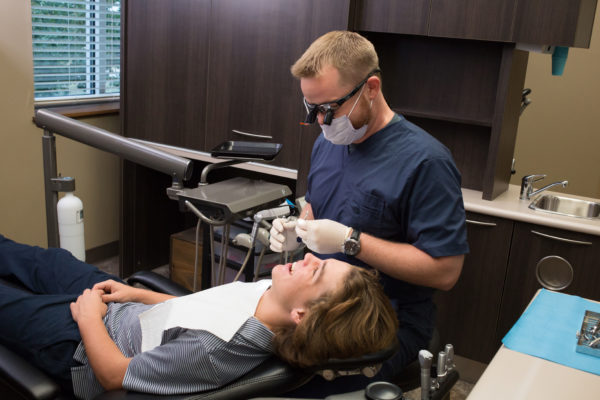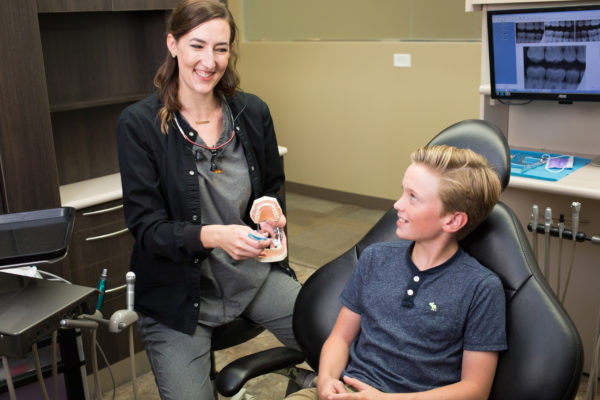A beautiful, healthy smile that lasts a lifetime is our ultimate goal when treating patients. Your personal home care plays an important role in achieving that goal. Your personal home care starts by eating balanced meals, reducing the number of snacks you eat, and correctly using the various dental aids that help control the plaque and bacteria that cause dental disease.
Tooth brushing
The teeth should be brushed at least twice a day, ideally in the morning and before bed. The perfect toothbrush is small in size with soft, rounded-end bristles, and is no more than three months old. The head of the brush needs to be small enough to access all areas of the mouth, and the bristles should be soft enough so as not to cause undue damage to the gum tissue. The American Dental Association (ADA) has given electric toothbrushes their seal of approval, stating that those with rotating or oscillating heads are more effective than other toothbrushes. They are easy to use and can remove plaque efficiently. Simply place the bristles of the electric brush on your gums and teeth and allow the brush to do its job, several teeth at a time. Here is a guide for proper brushing:
- Place the toothbrush at a 45-degree angle where the gums and teeth meet.
- Use small circular motions to gently brush the gum line and teeth.
- Do not scrub or apply too much pressure to the teeth, as this can damage the gums and tooth enamel.
- Brush every surface of every tooth, cheek-side, tongue-side, and chewing surfaces. Place special emphasis on the surfaces of the back teeth.
- Use back and forth strokes to brush the chewing surfaces.
- Brush the tongue to remove fungi, food, and debris.
Flossing
Flossing is a great way to remove plaque from the interdental regions (between the teeth). Flossing is an especially important tool for preventing periodontal disease and limiting the depth of the gum pockets. The interdental regions are difficult to reach with a toothbrush and should be cleansed with dental floss on a daily basis. The flavor and type of floss are unimportant; choose floss that will be easy and pleasant to use. Here is a basic guide to proper flossing:
- Cut a piece of floss to around 18 inches long.
- Wrap one end of the floss around the middle finger of the left hand and the other end around the middle finger of the right hand until the hands are 2-3 inches apart.
- Work the floss gently between the teeth toward the gum line.
- Curve the floss in a U-shape around each individual tooth and carefully slide it beneath the gum line.
- Carefully move the floss up and down several times to remove interdental plaque and debris.
- Do not pop the floss in and out between the teeth as this will inflame and cut the gums.
Floss holders are recommended if you have difficulty using conventional floss.
Rinsing
It is important to rinse your mouth with water after brushing and after meals if you are unable to brush. If you are using an over-the-counter product for rinsing, it’s a good idea to consult with your dentist or dental hygienist on its appropriateness for you.

